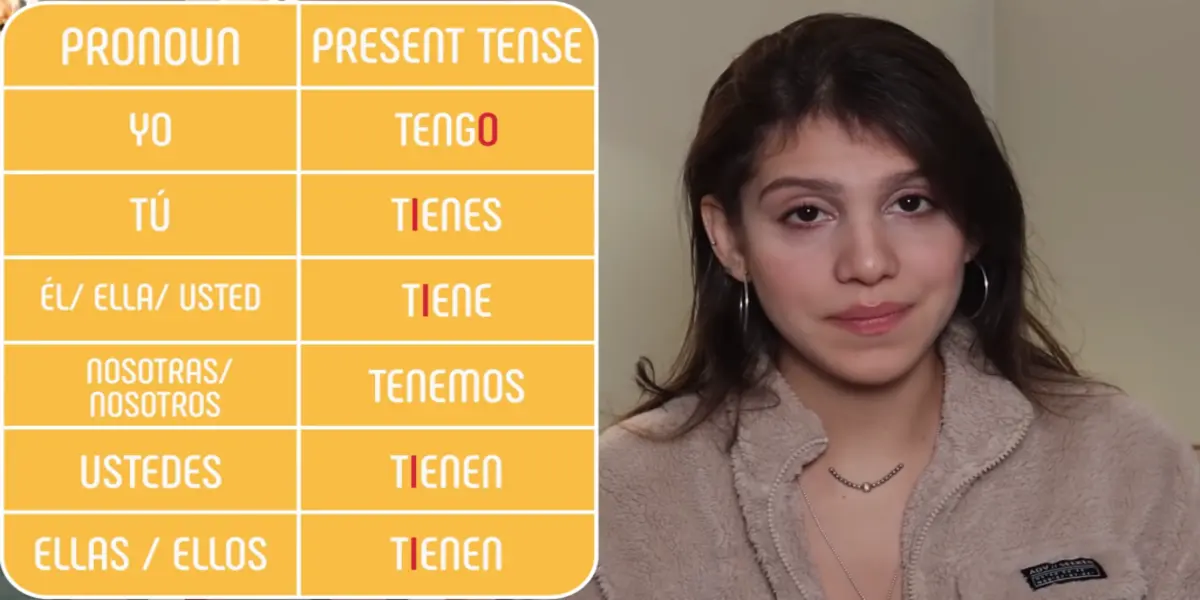Tener conjugation is one of the most essential aspects of Spanish grammar, as the verb “tener” (which means “to have”) is used in a wide range of contexts beyond simple possession. Whether expressing age, obligation, or conditions, mastering the various conjugations of “tener” is crucial for anyone learning Spanish. In fact, according to linguistic studies, “tener” is one of the top 10 most commonly used verbs in both spoken and written Spanish. This high frequency makes it a foundational building block in acquiring fluency. Native speakers use it in idiomatic expressions like “tener hambre” (to be hungry) or “tener razón” (to be right), which do not translate literally into English but are indispensable in daily conversation. Learning how to properly conjugate “tener” in different tenses opens the door to clearer communication and a better understanding of Spanish culture and syntax. In this article, we will break down the conjugation of “tener” in various tenses and provide clear explanations with examples to help learners use it confidently.
What Does “Tener” Mean?
The verb “tener” means “to have,” but its use extends beyond ownership. In English, “to have” can refer to possession, experiences, or physical states. Similarly, “tener” performs these functions in Spanish, but it also plays a critical role in idiomatic and emotional expressions. For example, “tener frío” means “to be cold,” which might seem confusing since it translates directly as “to have cold.” Yet this is how Spanish speakers express physical sensations.
Additionally, “tener” is frequently used in expressing age, such as “Tengo 25 años” (I am 25 years old). In English, we use the verb “to be” for age, but Spanish uses “tener.” This shows how important it is to master this verb not just for grammar but also for cultural understanding.
Present Tense Conjugation of Tener
In the present tense, “tener” is an irregular verb, which means it does not follow standard conjugation patterns. Here is how “tener” is conjugated in the present tense:
- Yo tengo (I have)
- Tú tienes (You have, informal)
- Él/Ella/Usted tiene (He/She/You have, formal)
- Nosotros/Nosotras tenemos (We have)
- Vosotros/Vosotras tenéis (You all have, informal plural in Spain)
- Ellos/Ellas/Ustedes tienen (They/You all have)
The irregularities in “tener” occur primarily in the first person singular (“yo tengo”) and the stem changes in other forms. Knowing these variations is important for accurate communication, especially in conversations.
Preterite Tense of Tener
The preterite tense is used to express actions that were completed in the past. “Tener” is also irregular in this tense, and its stem changes completely from “ten-” to “tuv-“. Below are the preterite forms:
- Yo tuve (I had)
- Tú tuviste (You had)
- Él/Ella/Usted tuvo (He/She/You had)
- Nosotros/Nosotras tuvimos (We had)
- Vosotros/Vosotras tuvisteis (You all had)
- Ellos/Ellas/Ustedes tuvieron (They/You all had)
This tense is useful when talking about specific events, such as “Ayer tuve una reunión importante” (Yesterday I had an important meeting).
Imperfect Tense of Tener
The imperfect tense is used to talk about past habits or ongoing conditions. Unlike the preterite, the imperfect forms of “tener” are more regular and easier to remember:
- Yo tenía (I used to have)
- Tú tenías (You used to have)
- Él/Ella/Usted tenía (He/She/You used to have)
- Nosotros/Nosotras teníamos (We used to have)
- Vosotros/Vosotras teníais (You all used to have)
- Ellos/Ellas/Ustedes tenían (They/You all used to have)
The imperfect is especially useful for storytelling and descriptions, such as “Cuando era niño, tenía muchos juguetes” (When I was a child, I had many toys).
Future Tense Conjugation of Tener
In the future tense, “tener” follows an irregular pattern, but once the stem is known, the endings are consistent with other irregular verbs. The stem changes to “tendr-“:
- Yo tendré (I will have)
- Tú tendrás (You will have)
- Él/Ella/Usted tendrá (He/She/You will have)
- Nosotros/Nosotras tendremos (We will have)
- Vosotros/Vosotras tendréis (You all will have)
- Ellos/Ellas/Ustedes tendrán (They/You all will have)
Future tense is commonly used in planning or predicting events. For example: “Mañana tendré una entrevista de trabajo” (Tomorrow I will have a job interview).
Conditional Tense of Tener
The conditional tense is used to express what someone would have under certain circumstances. “Tener” uses the same irregular stem “tendr-” but with different endings:
- Yo tendría (I would have)
- Tú tendrías (You would have)
- Él/Ella/Usted tendría (He/She/You would have)
- Nosotros/Nosotras tendríamos (We would have)
- Vosotros/Vosotras tendríais (You all would have)
- Ellos/Ellas/Ustedes tendrían (They/You all would have)
It is often used in hypothetical or polite contexts, like “Tendría más tiempo si no trabajara tanto” (I would have more time if I didn’t work so much).
More Read: Classroom 15x
Subjunctive Mood Conjugation
The subjunctive mood is used to express doubt, desire, or uncertainty. In the present subjunctive, “tener” changes its stem to “teng-” and uses the following endings:
- Yo tenga
- Tú tengas
- Él/Ella/Usted tenga
- Nosotros/Nosotras tengamos
- Vosotros/Vosotras tengáis
- Ellos/Ellas/Ustedes tengan
This form is used in sentences such as “Espero que él tenga éxito” (I hope he has success), where the outcome is not guaranteed.
Common Expressions Using Tener
“Tener” is often used in expressions that do not translate literally into English. These idiomatic expressions are crucial for sounding natural in Spanish:
- Tener hambre (to be hungry)
- Tener prisa (to be in a hurry)
- Tener miedo (to be afraid)
- Tener razón (to be right)
- Tener suerte (to be lucky)
These expressions make conversations more authentic and help in understanding native speakers.
Why Tener is Essential for Spanish Learners
Understanding “tener” goes beyond grammar. It provides access to idiomatic expressions, helps form essential sentences, and is a gateway to advanced communication. According to a 2023 language usage report, “tener” appears in over 80 percent of beginner and intermediate-level Spanish textbooks, highlighting its importance in curriculum development.
In real-life conversations, “tener” appears in a variety of topics: personal descriptions, health, time management, family, and emotions. This makes it one of the most versatile verbs in the Spanish language. Its irregularities also serve as a valuable introduction to more complex verb patterns learners will encounter later.
Conclusion
Tener conjugation is one of the most critical concepts in Spanish grammar, influencing a wide range of everyday expressions and advanced sentence structures. From simple phrases like “tengo un hermano” (I have a brother) to more complex ones like “tendría más dinero si ahorrara” (I would have more money if I saved), “tener” appears throughout all levels of language use. Its irregular conjugation patterns in various tenses such as present, preterite, imperfect, future, conditional, and subjunctive must be memorized and practiced regularly for fluency. Understanding how to use “tener” also deepens comprehension of Spanish idioms and cultural expressions, making communication more natural and effective. Because of its high frequency in conversation and literature, no Spanish learner can progress without a firm grasp of how to conjugate and apply “tener” accurately. As one of the top ten most used verbs in Spanish, mastering “tener” builds the foundation for confident speaking, listening, reading, and writing.
FAQs:
What does “tener” mean in Spanish?
“Tener” means “to have,” but it is also used in expressions to indicate age, emotions, and conditions.
Is “tener” a regular or irregular verb?
“Tener” is an irregular verb with different stems and endings in several tenses, including the preterite and future.
Why is it important to learn “tener” conjugation?
“Tener” is used frequently in everyday Spanish, including in common idiomatic expressions and necessary sentence structures.
How do I remember the different forms of “tener”?
Practice each tense regularly, use flashcards, and include “tener” expressions in daily conversation or writing exercises.
Can “tener” be used with reflexive pronouns?
While rare, it can be reflexive in phrases like “tenerse en cuenta” (to consider oneself), though this is more advanced usage.
FOR MORE DETAILS: Businesstodesk.com


